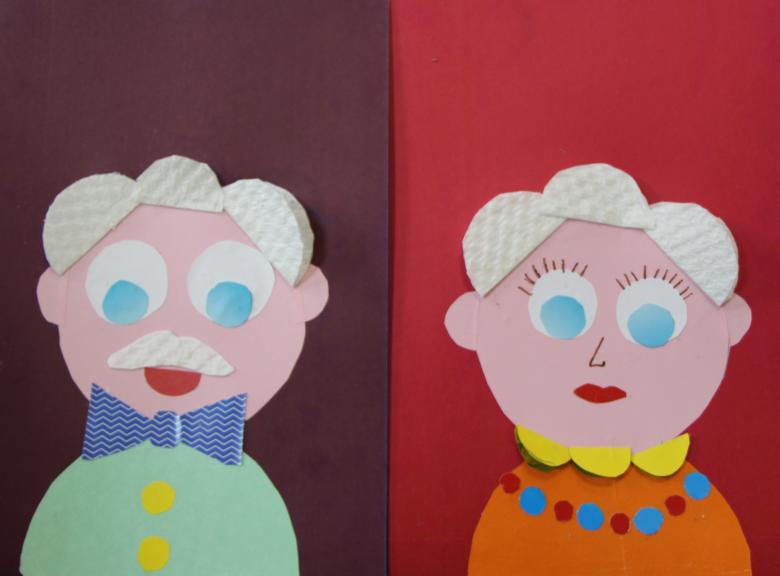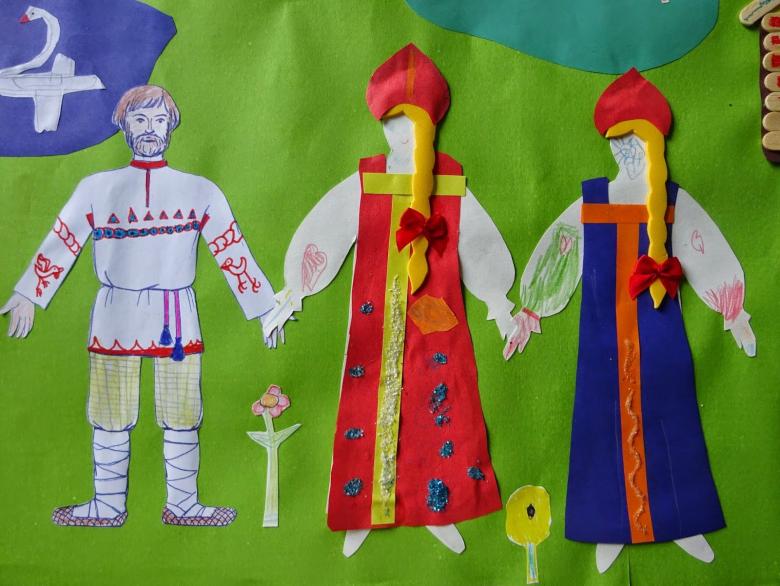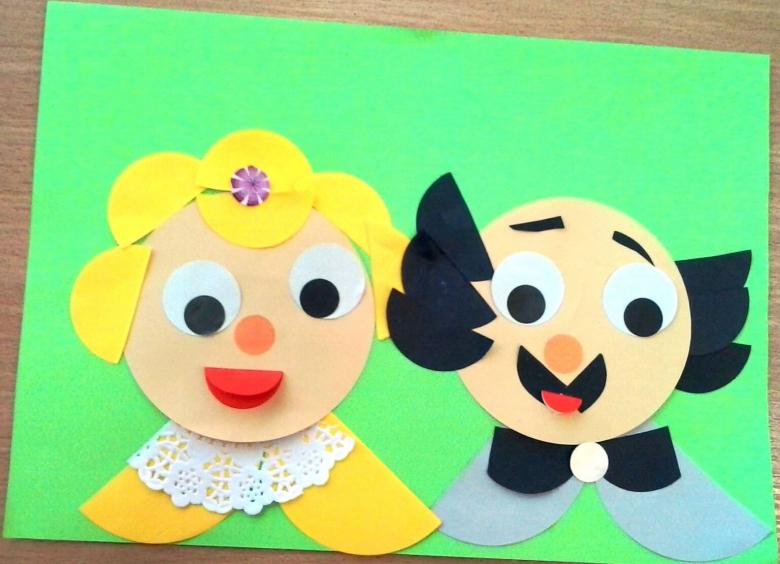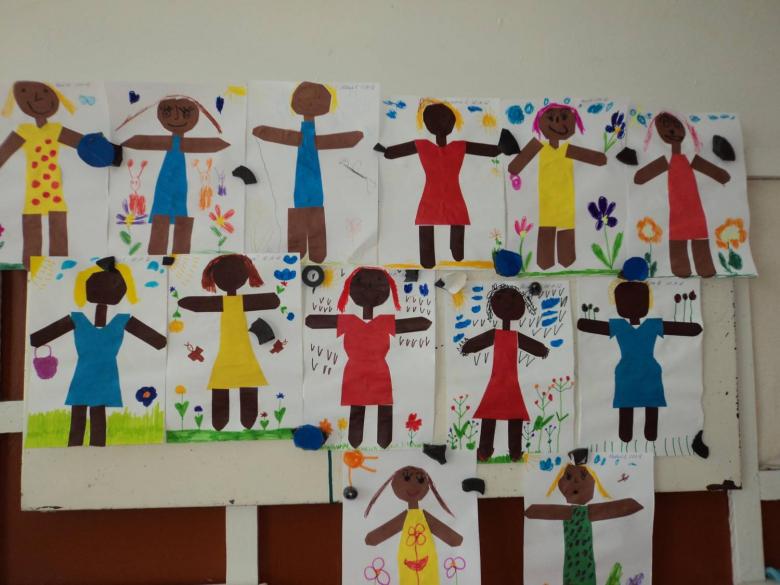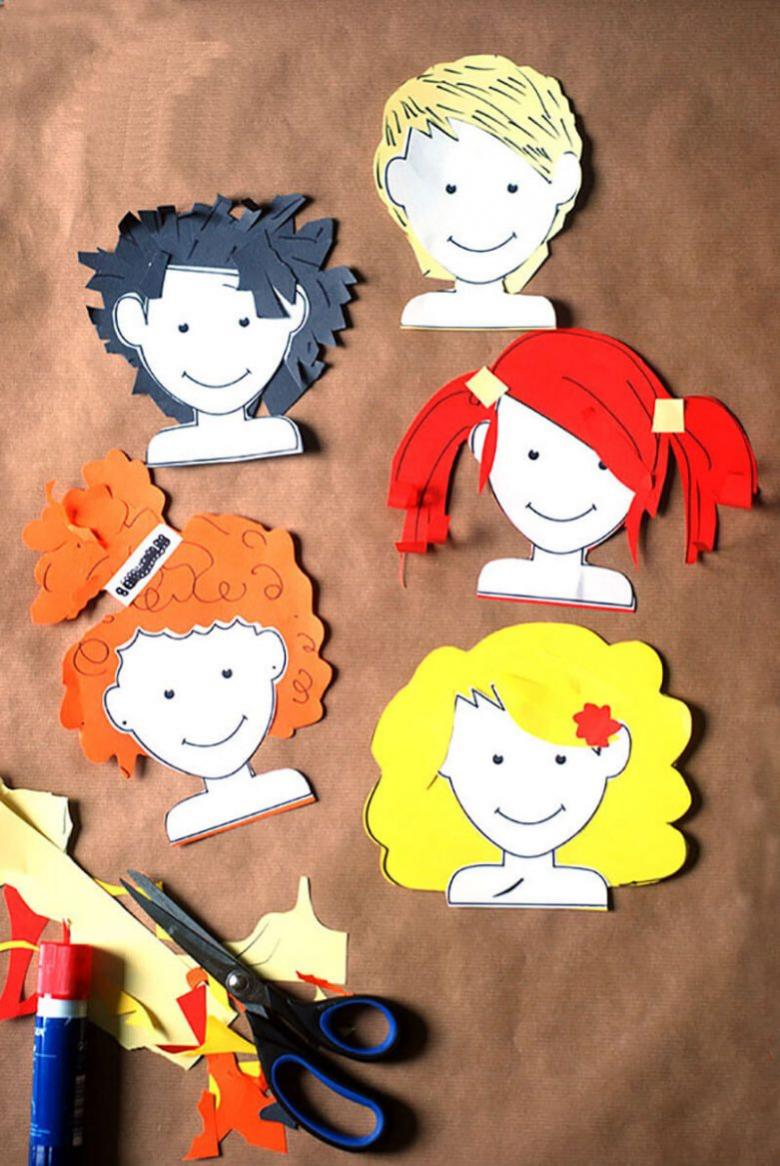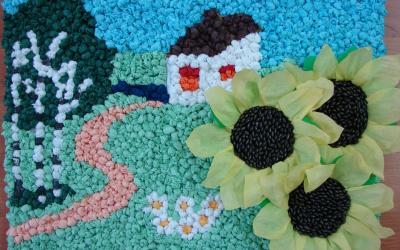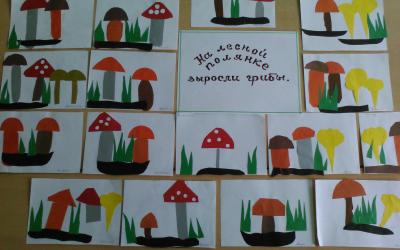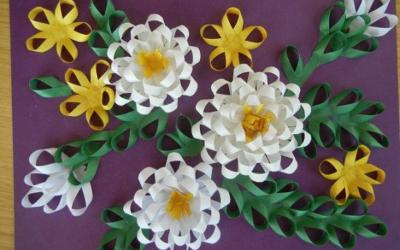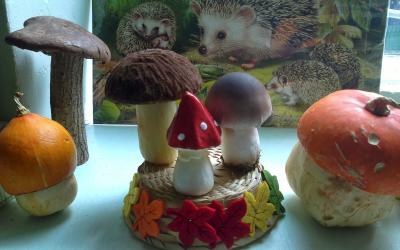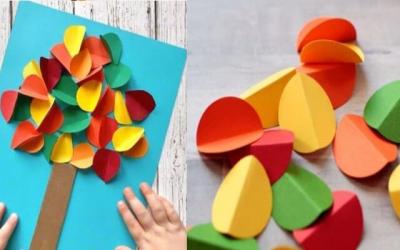Applique man: design tips and ready-made examples
Human collage is a very fascinating and creative work. Its advantage is the variety of techniques used and the varying complexity. Such work is suitable for very young children, preschoolers and elementary school students. With the help of human applique, it is possible to study geometric shapes, colors, parts of a person's face, his emotions.

Applique from geometric shapes
The simplest variant of human applique is from geometric figures. This technique helps to develop a child's imagination. As the basic elements are used square, triangle, circle, rectangles.
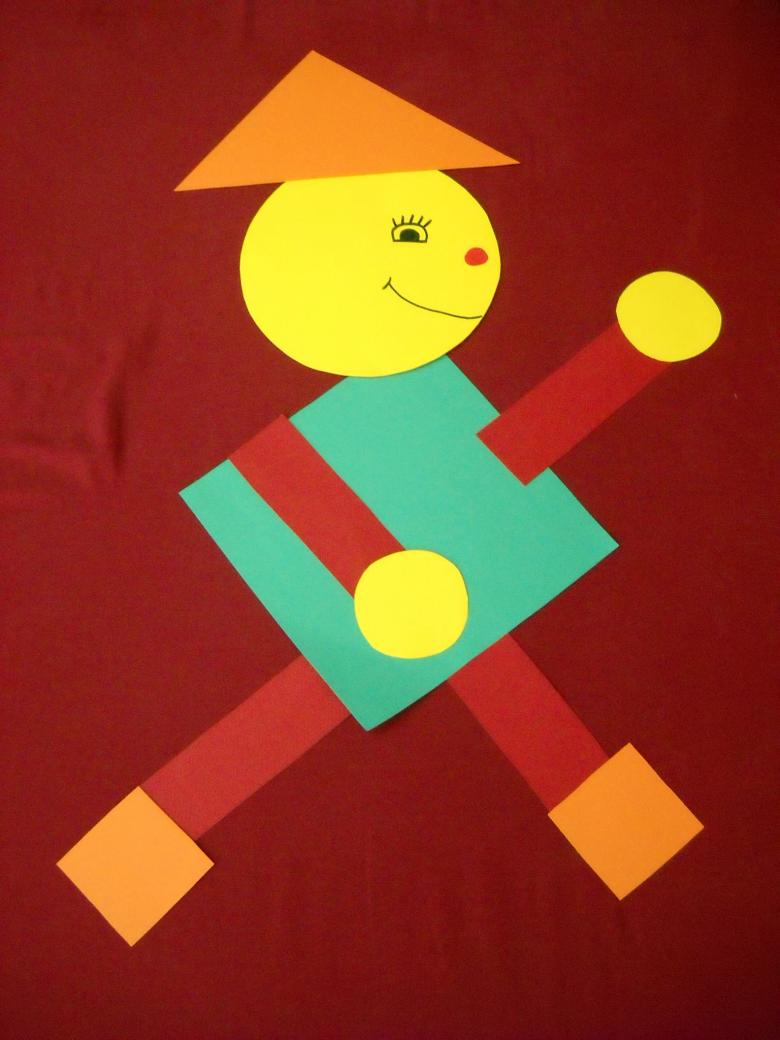
For the applique you will need:
- templates of triangles, circles,
- cardboard;
- glue.
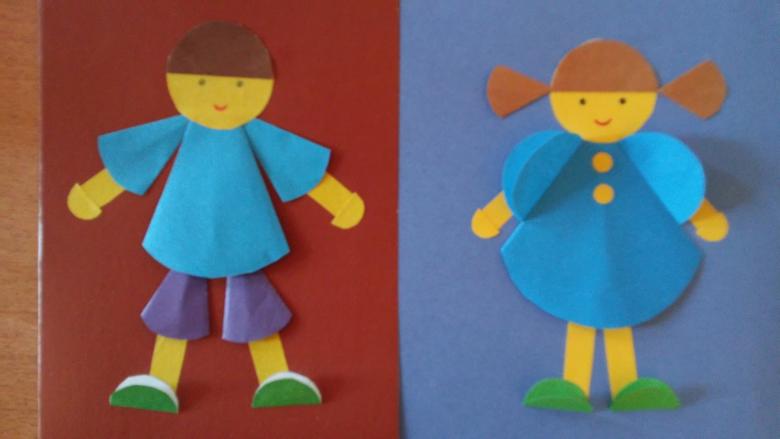
The complexity of the work depends on the number of parts and elements used. The easiest variant is to offer a child to arrange the figures so that the body, head, arms and legs turn out. Use a rectangle (boy figure) or triangle (girl figure) as a body. Instead of the head is a circle. Hands and feet are made from thin rectangles.
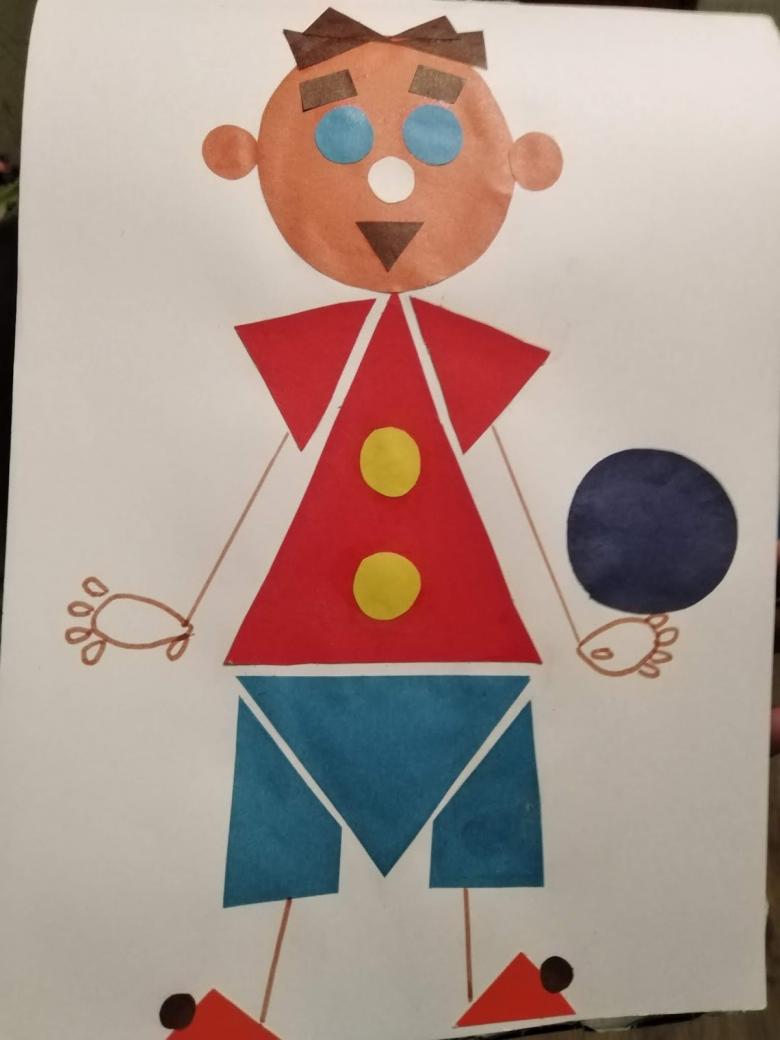
Complicate the work different parts - pigtails, hat, allocation of hands and feet. Small parts indicate the eyes, mouth, nose.

Face: examining the senses and emotions
Applique of a person's face from paper is not just an interesting creativity, but also an opportunity to develop the child in different areas. To get acquainted with the senses and emotions, children are offered to do a simple job - glue eyes, mouth, nose, ears on a template.

Classes can be divided into two types depending on age:
- Introduction to the location of the organs;
- the game of emotions.

Acquaintance with the location of the senses
Familiarity with the location and purpose of the senses is necessary for children ages 2-3 years. At this period, the work is done with the help of an adult.

For the applique you will need:
- a template of a face;
- templates of the mouth, eyes, nose and ears;
- glue.

To start with, a child is shown a face template and told that the senses are located on it. One by one they show the organs, explain their purpose and location and let them look at them. The child smears glue on the template and glues it to the face. The activity is repeated with each of the senses.

Familiarity with emotions.
Application of the emotional face of a person will be interesting to children at the age of 4-5 years. For work it is necessary to prepare in advance templates of eyes and mouth, expressing different emotions - anger, joy, sadness. You will also need a human face made of paper for the applique. It can be pre-drawn with a nose.
- Work begins with one emotion. It is described in detail. Tell how this feeling is expressed with the eyes and mouth.
- Invite the child to choose appropriate patterns from the general set and place them on the face. If they got it right, move on to the next emotion.
- If the child makes a mistake, it is necessary to discuss it and help correct it.
The game of emotions is interesting not only in the form of applique, but also with magnetic templates or details on velcro.

A person in motion.
Developing the creative abilities and imaginative perception of a child allows the application of a person in motion. The difficulty of this task is that the work uses rectangles and squares of different sizes.

For applique you will need:
- blanks of squares and rectangles of paper;
- cardboard;
- glue.

The work consists of several stages:
- The child is offered to choose a cardboard base on which he or she will glue the figure.
- The adult speaks out the pose that will be depicted in the form of an appliqué. He or she explains how the arms and legs are positioned in this pose, and what specific features there are. For example, a person runs, bends down or jumps.
- The child takes the prepared templates and arranges them in the necessary pose on cardboard. If the figure is correct, he or she glues the rectangles with glue.
- If there are mistakes in the pose, the adult tells the child how to correct them.
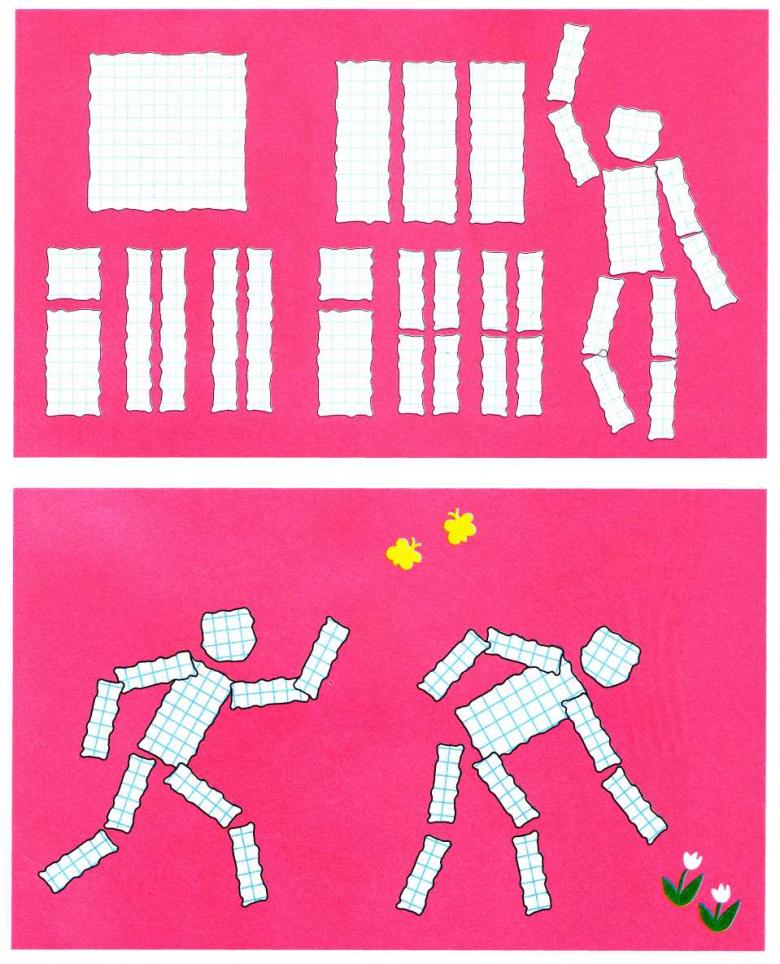
Applique of a person in motion will be useful for elementary school children and art students.

Learning anatomy
Older children will find it interesting to study human anatomy through the example of applique. Such a game allows not only the development of fine motor skills and diligence, but also acquaints children with the structure of internal organs.

Depending on the age and level of training, the number of organs may vary. The game will require:
- a template (outlines of the human body);
- organs (brain, stomach, lungs, liver, heart, intestines and others);
- a diagram with the location of the organs on the template and their names;
- glue.

The essence of the game is to acquaint a child with internal organs.
- Each organ is taken in turn. They clearly pronounce its name and show where it should be located on the diagram. For older children tell the purpose of the organ.
- The child takes the organ and glues it to the human stencil for application.
- The actions are repeated with each organ.

If this is not the first time that they have been introduced to the internal structure of the person, the child can be offered to glue the organs on the template.

The moving man
Templates of human body parts allow for more interesting applications for children. With their help, it is possible to achieve a realistic bright picture or give it dynamics. Older kids will probably love the dynamic applique.
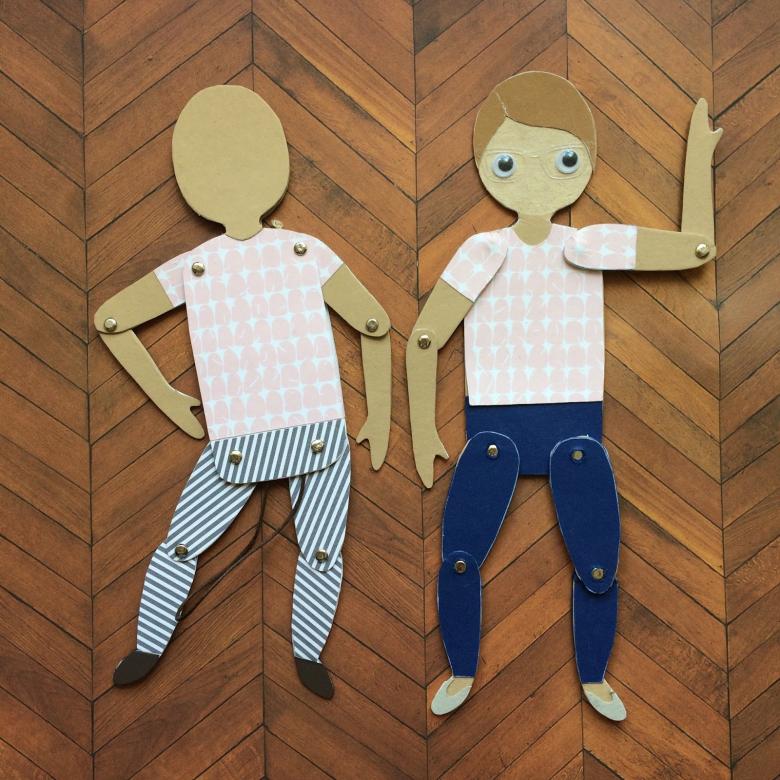
The work will require:
- templates of body parts (arms, legs, torso, head);
- screws and nuts from a metal construction set;
- cardboard;
- glue;
- scissors.

The work is performed in several stages:
- The templates, printed on paper, are cut out and glued to heavy cardboard. This makes them sturdier. Then the parts are cut out of the cardboard.
- The hands are attached to the body and a through hole is made with sharp scissors. Insert a screw and screw a nut. The operation repeated with the legs.
- Similarly, attach the head to the body.
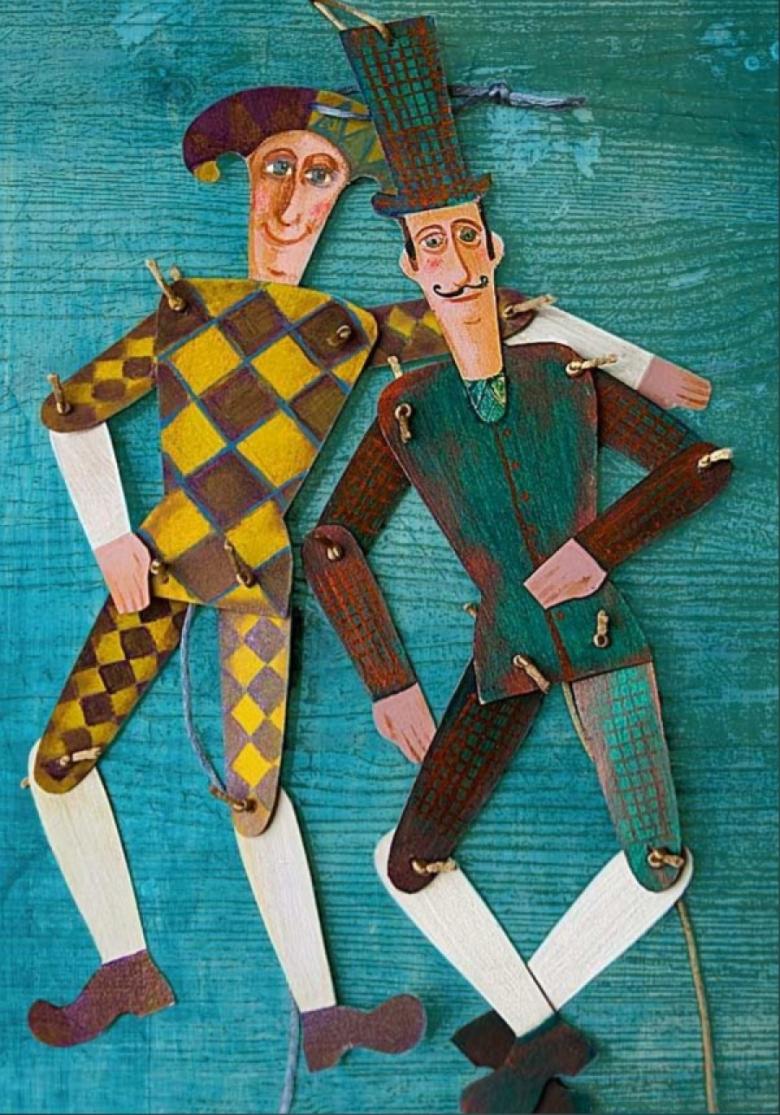
Man gets mobility and ready to play. Complicate the work by making additional connections in the elbow bends and knees.

Applique is a fascinating creative activity that develops imaginative thinking, assiduity, and fine motor skills. Work with paper is indicated for children of all ages. After practicing the skills of appliqué man on paper, you can move on to more interesting and challenging activities - for example, create a reusable velcro game out of felt.



